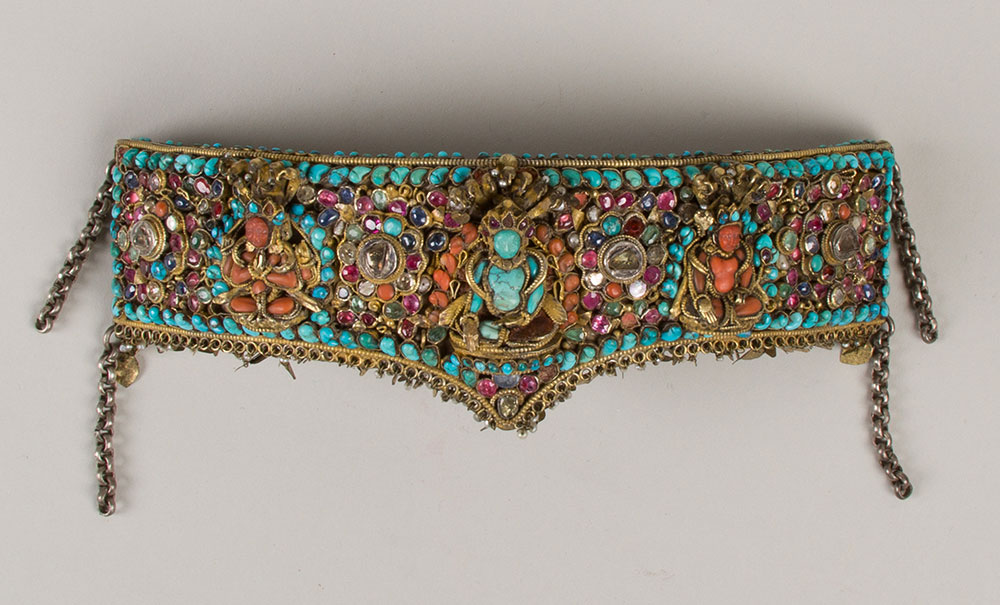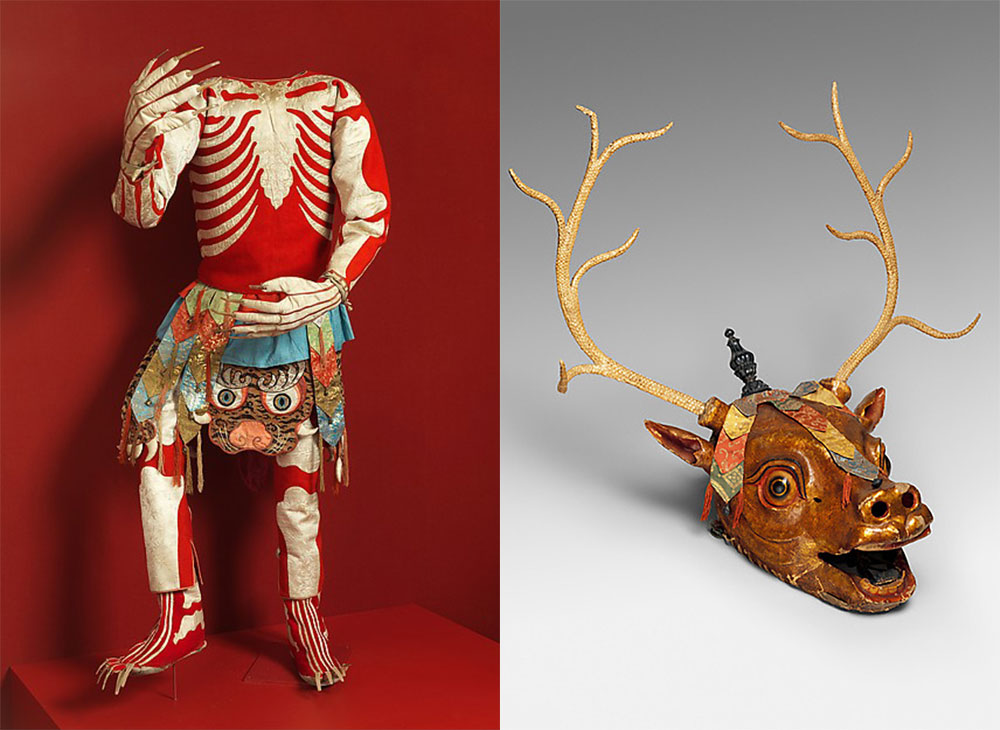‘Sacred Traditions of the Himalayas’

Forehead Ornament for a Crown or a Deity, Newari for Nepal or Tibet market, 17th-19th century. Gilt silver, brass, diamonds, emeralds, rubies, sapphires, pearls, coral, shell, turquoise and semiprecious stones. Metropolitan Museum of Art, John Stewart Kennedy Fund, 1915
A new exhibition at the Metropolitan Museum of Art, ‘Sacred Traditions of the Himalayas’, engages with devotional practices across a region encompassing modern Nepal, Tibet, Bhutan and Mongolia.
Objects on display include mandalas, embroidered thangkas, devotional sculpture and jewellery for the gods, from the thirteenth to the early twentieth century. The star exhibits are set to be the ritual costumes used by masked dancers during major public festivals and secret monastic ceremonies. Through dance, divine conflicts were re-enacted in order to keep evil at bay and safeguard prosperity. In addition, dance was a means of conveying aspects of Buddhist philosophy to the general populace. The exaggerated features and bold colours of the masks and costumes meant that the dancing figures were visible from afar, functioning in a manner similar to modern stage outfits.

Skeleton Dance Costume, Tibet, late 19th or early 20th century. Silk, flannel. Metropolitan Museum of Art, Gift of Mrs. Edward A. Nis, 1934 & Stag Mask, Tibet, late 19th or early 20th century. Papier-mâché, polychrome, gilding, leather, and silk. Metropolitan Museum of Art
In Himalayan theology, the gods are believed to dwell in jewelled celestial palaces, providing a context for the opulent ornamental pieces in the exhibition. It was customary for pilgrims to donate their personal jewellery to the Buddha and monastic orders as an act of piety, leading to the integration of such objects in religious imagery. Another common offering from the lay community was sculpture, since the veneration of images played an important part in Buddhist devotions. Weapons and armour, particularly specimens that had seen battle, were suitable gifts to the ferocious guardian deities. Connecting these seemingly diverse objects on view is their function as bridges to the otherworldly.
Until 14 June 2015



























Comments [0] Sign in to comment